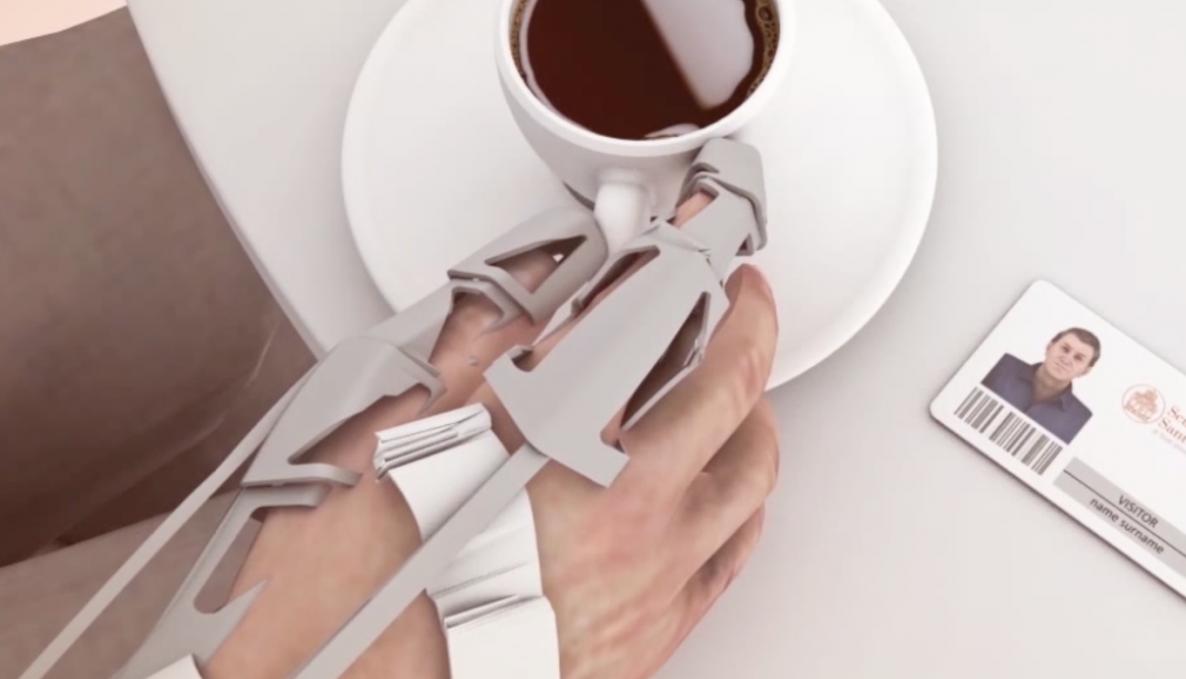Bioengineering, neuro-robotic hand exoskeleton restores grasp function to quadriplegics using a non-invasive brain-neural interface system

A pioneering brain-neural system has restored the ability to eat and drink independently to quadriplegic patients immobilized by spinal cord injuries, resulting in impaired function in the upper limbs, lower limbs and trunk.
The brain-neural hand exoskeleton, non-invasive interface system developed by researchers at the Sant’Anna School BioRobotics Institute, the University of Tübingen, Germany, and the Guttmann Institute in Spain, which has temporarily restored grasp function to quadriplegic patients, consists of a lightweight hand exoskeleton connected to a computerized control system integrated into a wheelchair. The study - featured in the inaugural issue of “Science Robotics”, a new journal from Science family, has been conducted by a consortium of European scientists coordinated by Nicola Vitiello and Maria Chiara Carrozza, researchers of Sant’Anna School BioRobotics Institute, and Surjo Soekadar, University of Tübingen and Eloy Opisso of Guttmann Institute.
The study participants were able to perform activities of daily living, for example, to eat and drink independently at a restaurant, write with a pen or hold a credit card; a restored ability which will significantly improve the patients’ quality of life after spinal cord injury or stroke.
During the past years it was assumed that the brain-machine interface would require invasive surgical implantation of neural electrodes, while the new system has used electric “bio-signals” recorded from the scalp and translated brain electric activity into hand opening and closing motions, avoiding any surgical procedure, thanks to portable and wireless hardware integrated into the wheelchair; the recent trials have shown patients could freely move and use the system in their everyday life environment.
Researchers are aware that large-scale clinical trials will be required for further validation; nevertheless, the system introduced by the European consortium may accelerate long-term and out-of-the-lab studies. “After extensive trials – Nicola Vitiello of Sant’Anna School BioRobotics Institute underlines more clearly – it will be possible to have a better knowledge of the system’s functioning, and develop marketing and product launch strategy for more affordable technology”.
Professor Maria Chiara Carrozza explains that “this study highlighted the importance of lightweight hand exoskeleton connected to portable motors. We focused on the critical aspects of a biomedical device: portability, wearability, usability and modularity. We aimed at improving the wheelchair as a ‘docking station’ system which holds heavy calculation, implementation (movement) and propulsion modules. New algorithms will be implemented in the control software to connect hand motions to brain activity in order to facilitate autonomous movement of quadriplegic patients helping the people during the activities of daily living. Our ultimate goal is to improve the quality of life of injured individuals”.



